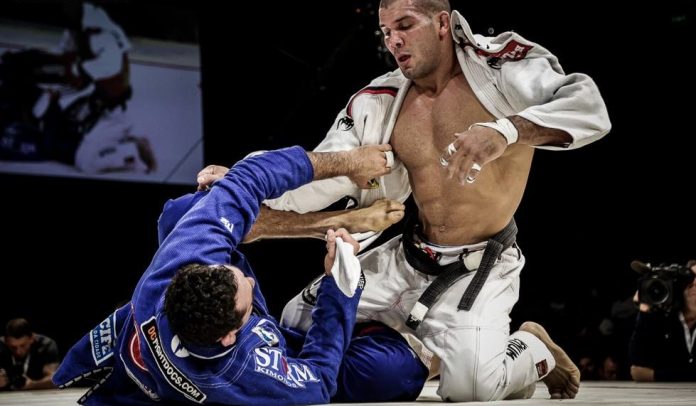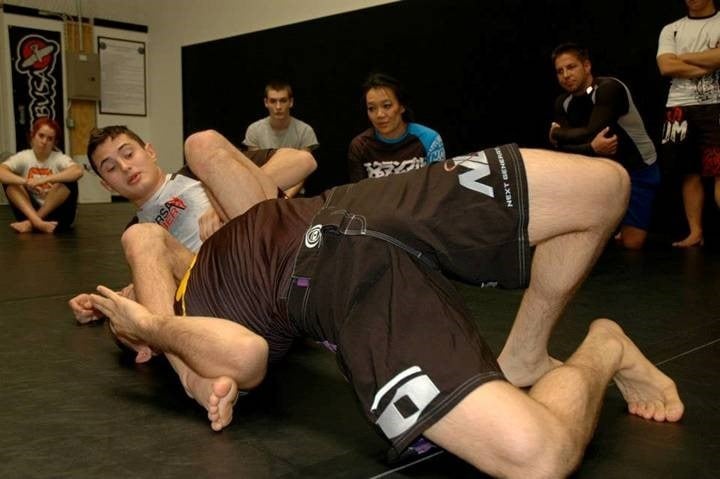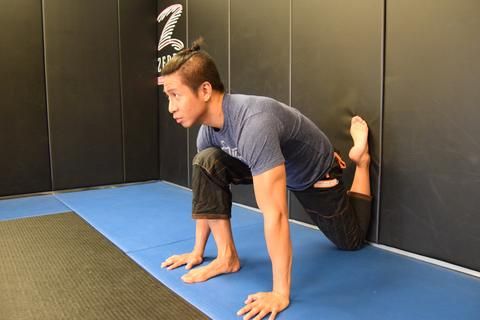
If you’ve been training BJJ for longer than a year and you wake up one day and nothing hurts, then you’re most likely dead. As far as sentiments go that describe how BJJ feels, this one nails it on the spot. Of course, injuries are an unavoidable part of every sport, especially competitive ones. Also, martial arts that include sparring then to be high er on the list than most other sports. And BJJ ranks quite high on the injury-laden martial arts list in itself. It is to be expected, honestly, from an art that manipulates joints from a weird position in order to cause pain and discomfort. Grappling injuries might be unavoidable altogether, but you certainly can look to minimize their occurrence. As such, BJJ injury prevention should be in your focus, rather than recovery.
BJJ injury prevention is all about being smart when you go to train. the Jiu-Jitsu injury list is one filled with the most unusual trauma the human body can ever get. of course, there are your regular major joint twists, muscle pulls and the odd bone break or two. But on top of that, you get pain in muscle s you never knew existed, you get potentially chronic conditions in form of arthritis and you can also get an injury that’ll amaze orthopedic specialists for years to come. So why keep training? Well, it’s fun of course. And this is a big part of the problem as well.
The fact that grappling is som much fun means people tend to train through injury or come back before they heal up. This just continues the cycle, causing new injuries due to compensation. Finally, one day you’ll find yourself with a serious condition like a hernia, and you’ll have to take a big step back. If only you had a way to prevent all that. Well, there are several, to be honest, and when it comes to BJJ injury prevention we need to make the most out of all of them.
The BJJ Injury Cycle
So, after a while in BJJ, you already have the usual aches and pains. YOur rib is “itchy” form that knee on belly drill last night. You twisted your big toe in a hole in the mats last week but it’s no big deal. You held on to an armbar for just a second longer, thinking you were close to escaping.
Of course, it does, it is a fact of life for grapplers. For people who learn from their own mistakes in order to progress through BJJ, we’re notoriously stubborn to apply the same mindset to BJJ injury prevention. Let’s look at the examples above to see where we go wrong.
The bruised rib from knee on belly drills. You KNOW that it’s tender and that it hurts when you breathe. However, you’re not about to miss practice because of a small thing like that. So, you’re going to end up rolling all out, with everyone and look to avoid new pressure on the same spot. Which, funny enough, is exactly what you’re’ going to get.

You see where I’m going with this. When you know you’re injured, or simply when something is off, you need to focus on prevention. Do not let the injury cycle to set in, or you’ll never be able to break it.
BJJ Injury Prevention 101

The next item on the checklist is in regard to training choices. If you’re just coming back off a knock, do not go straight for the biggest guy in the gym. It doesn’t matter if it’s just a white or blue belt. Actually, that makes them even more of a risk due to unpredictability. In that sense, also look to avoid positions that you know can cause discomfort. If you have trapezius or neck troubles, playing an inverted guard is surely going to land you an injury. And a lengthy one at that.

Russell Brand: Life Is a Struggle And BJJ Teaches You How To Cope With the Struggle
Grappling Strength Training – How To Train Isometric Strength


![Darce Choke Encyclopedia – Origins, Mechanics and Variations [2025] BJJ, choke, Brabo, BJJ Darce Choke, D'arce Choke, Darce BJJ Choke](https://bjj-world.com/wp-content/uploads/2017/11/JungPoirierLeeYahoo-218x150.jpg)









![X-Guard Trickery Kyle Sleeman DVD Review [2025] X-Guard Trickery Kyle Sleeman DVD Review](https://bjj-world.com/wp-content/uploads/2025/03/x-guard-trickery-kyle-sleeman-dvd-review-218x150.png)
![Countering with Crab Ride Anthony Budion DVD Review [2025] Countering with Crab Ride Anthony Budion DVD Review](https://bjj-world.com/wp-content/uploads/2025/03/countering-with-crab-ride-anthony-budion-dvd-review-218x150.png)
![Closet Closed Guard Craig Jones DVD Review [2025] Closet Closed Guard Craig Jones DVD Review](https://bjj-world.com/wp-content/uploads/2025/03/closet-closed-guard-craig-jones-dvd-review-218x150.png)
![Xanadu Back Takes Levi Jones-Leary DVD Review [2025] Xanadu Back Takes Levi Jones-Leary DVD Review](https://bjj-world.com/wp-content/uploads/2025/03/xanadu-back-takes-levi-jones-leary-dvd-review-218x150.png)

![No-Gi Grapplers Guide To Front Headlock Joel Bane DVD Review [2025] No-Gi Grapplers Guide To Front Headlock Joel Bane DVD Review](https://bjj-world.com/wp-content/uploads/2025/03/no-gi-front-headlock-joel-bane-dvd-review-218x150.png)
![Reverse Armlock Magid Hage DVD Review [2024] Reverse Armlock Magid Hage DVD Review](https://bjj-world.com/wp-content/uploads/2024/12/reverse-armlock-magid-hage-dvd-review-324x235.png)

![Ginastica Natural Alvaro Romano DVD Review [2024] Ginastica Natural Alvaro Romano DVD Review](https://bjj-world.com/wp-content/uploads/2024/12/ginastica-natural-alvaro-romano-dvd-review-100x70.png)

![Trip Throw Dilemma Michael Pixley and Heath Pedigo DVD Review [2024] Trip Throw Dilemma Michael Pixley and Heath Pedigo DVD Review](https://bjj-world.com/wp-content/uploads/2024/10/trip-throw-dilemma-michael-pixley-dvd-review-100x70.png)

![Front Head Lock Kaynan Duarte DVD Review [2025] Front Head Lock Kaynan Duarte DVD Review](https://bjj-world.com/wp-content/uploads/2025/02/front-head-lock-kaynan-duarte-dvd-review-100x70.png)

![The Stack Pass Andre Galvao DVD Review [2025] The Stack Pass Andre Galvao DVD Review](https://bjj-world.com/wp-content/uploads/2025/01/the-stack-pass-andre-galvao-dvd-review-100x70.png)

![Complete Front Headlock System Michael Pixley DVD Review [2024] Complete Front Headlock System Michael Pixley DVD Review](https://bjj-world.com/wp-content/uploads/2024/10/front-headlock-system-michael-pixley-dvd-review-100x70.png)
![Crush The Guard Vagner Rocha DVD Review [2024] Crush The Guard Vagner Rocha DVD Review](https://bjj-world.com/wp-content/uploads/2024/10/crush-the-guard-vagner-rocha-dvd-review-100x70.png)
![Giancarlo Bodoni DVD Bundle Essential Connections Full Review [2024] Giancarlo Bodoni DVD Bundle Essential Connections Full Review](https://bjj-world.com/wp-content/uploads/2024/09/giancarlo-bodoni-dvd-bundle-essential-connections-100x70.png)
![Baby Shark Guard System Diogo Reis DVD Review [2025] Baby Shark Guard System Diogo Reis DVD Review](https://bjj-world.com/wp-content/uploads/2025/02/baby-shark-guard-system-diogo-reis-dvd-review-100x70.png)



![Top Half Guard Neil Melanson DVD Review [2025] Top Half Guard Neil Melanson DVD Review](https://bjj-world.com/wp-content/uploads/2025/02/top-half-guard-neil-melanson-dvd-review-100x70.png)

![No-Gi Grapplers Guide To Front Headlock Joel Bane DVD Review [2025] No-Gi Grapplers Guide To Front Headlock Joel Bane DVD Review](https://bjj-world.com/wp-content/uploads/2025/03/no-gi-front-headlock-joel-bane-dvd-review-100x70.png)
![Jeff Glover DVD Bundle Review: Chokin’ Around With Uncle Jeff [2024] Jeff Glover DVD Bundle Review: Chokin' Around With Uncle Jeff](https://bjj-world.com/wp-content/uploads/2024/10/jeff-glover-dvd-bundle-review-chokin-around-100x70.png)
![I Got Your Back Jake Straus DVD Review [2025] I Got Your Back Jake Straus DVD Review](https://bjj-world.com/wp-content/uploads/2025/03/i-got-your-back-jake-straus-dvd-review-100x70.png)

![Shoulder Lock Mastery Zach Green DVD Review [2025] Shoulder Lock Mastery Zach Green DVD Review](https://bjj-world.com/wp-content/uploads/2024/12/shoulder-lock-mastery-zach-green-dvd-review-100x70.png)


